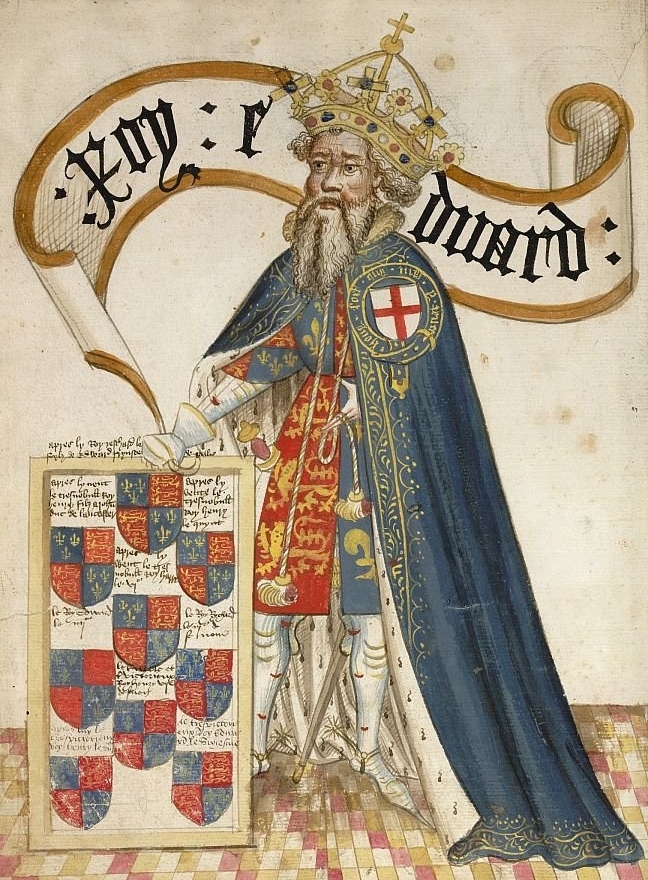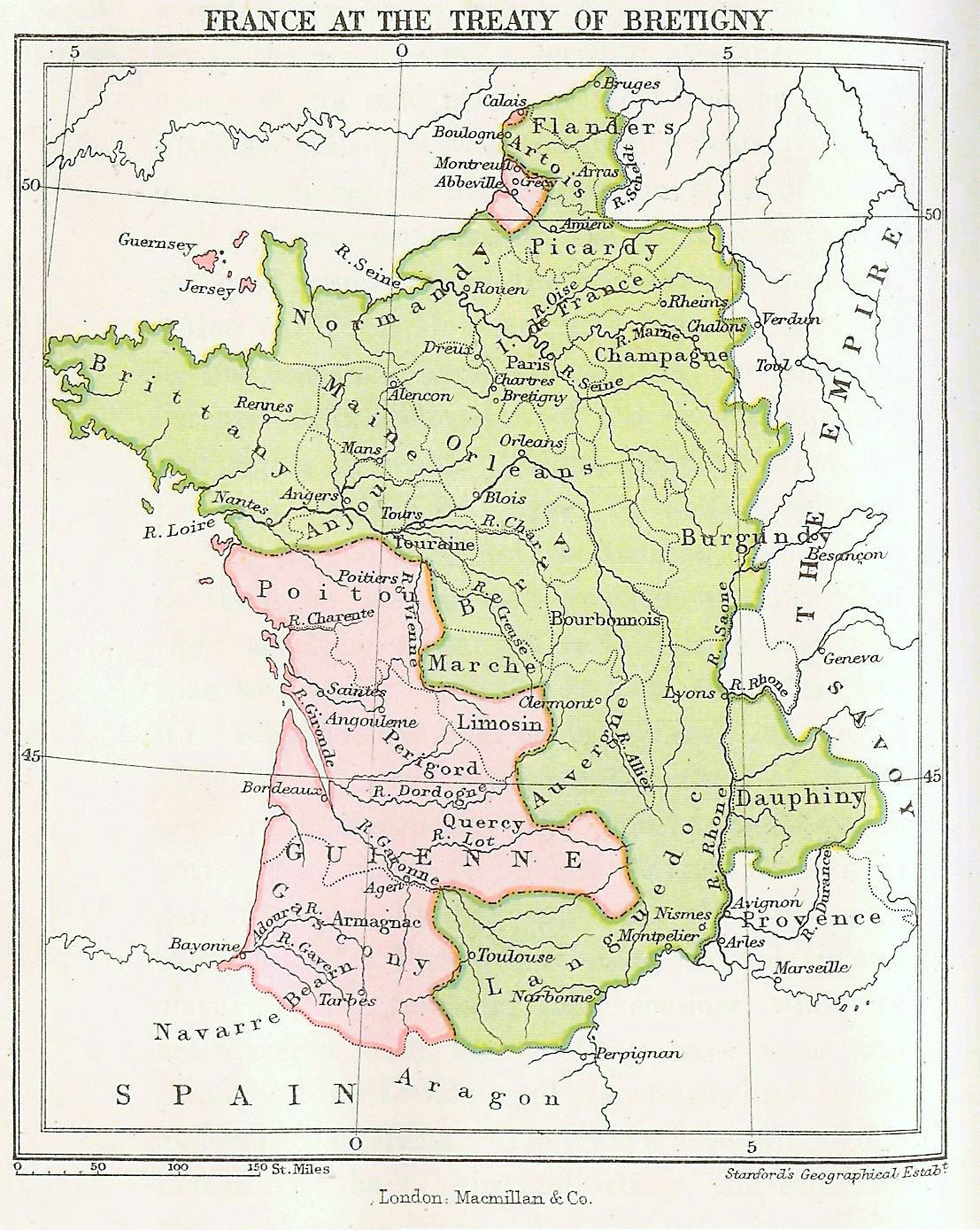Edward III of England
18th Great Grandfather – FFFMFFFMFFFFFFFMMFFF1
As I described in a previous article King Edward III of England was my 18th great grandfather through the Taylors, Gordons and ultimately Beaufort descendants of Edward III’s third son John of Gaunt. Books have been written about Edward III, so in this article I will briefly describe his life.

Edward was born on 13th November 1312 at Windsor Castle, the eldest son of Edward II and his wife Isabella, daughter of King Philip IV of France, so through Edward I am also descended from French Royalty. Prior to his accession to the throne he was known as Edward of Windsor after his birthplace2.
Edward was crowned at age fourteen, on 25th January 1327 after his father was deposed by his mother Isabella and her lover, Roger Mortimer. The following year, Edward married Phillippa of Hainault3 on 24th January 1328 at York Minster.
Edward and Philippa’s first child, the future Black Prince, was born on 15th June 1330. By this time, Edward was becoming increasingly worried about the ambitions of his mother’s lover Mortimer, who was the de facto ruler of England during Edward’s minority, and so later that same year at the age of seventeen, with a group of loyal friends he led a successful coup against Mortimer, and began his personal reign.
Edward’s reign is remembered for his military success against the French during the early phases of the Hundred Year’s War4. Edward had triggered the war by claiming he was the rightful King of France through his mother Isabella.

After some initial setbacks the first phase of the conflict, from 1337 to 1360, often known as the Edwardian War, which saw major victories for the English at Crecy5 and Poitiers6, resulted in the favourable Treaty of Bretigny7, in which England made territorial gains in France (see pink areas in Figure).
Edward and Philippa had 13 children, 8 sons and 5 daughters, although only 5 of his sons and one of his daughters attained adulthood. The eldest son was Edward8, nicknamed The Black Prince. He was a great warrior but died before his father in 1376, so his son Richard succeeded Edward III as King Richard II.
The second surviving son was Lionel of Antwerp9, the 1st Duke of Clarence. He also predeceased his father, in 1368. While he had no male heirs, his daughter Philippa, was the basis of the Yorkist claim to the throne during the Wars of the Roses.
The third surviving son, John of Gaunt10, Duke of Lancaster, was my ancestor and he was the basis of the Lancastrian claim to the throne.
The fourth son Edmund of Langley11, the 1st Duke of York, was the ancestor of the Yorkist kings, and finally the fifth son Thomas of Woodstock12 was Duke of Gloucester.
The Treaty of Bretigny was the high point in Edward’s reign and during the second phase of the Hundred Year’s War, the French regained most of what they had lost in the treaty.
Edward died of a stroke on 21st June 1377 and he was succeeded by his grandson Richard II. Edward had declared in his will that if Richard died without an heir then the crown should pass to the heirs of his third son John of Gaunt, rather than the heirs of his second son Lionel, i.e. Philippa, and this was one of the causes of the War of the Roses.
References
“Battle of Crécy.” 2025. Wikipedia; Wikimedia Foundation. 2025. https://en.wikipedia.org/w/index.php?title=Battle_of_Cr%C3%A9cy&oldid=1297340700.
“Battle of Poitiers.” 2025. Wikipedia; Wikimedia Foundation. 2025. https://en.wikipedia.org/w/index.php?title=Battle_of_Poitiers&oldid=1302464944.
“Edmund of Langley, 1st Duke of York.” 2025. Wikipedia; Wikimedia Foundation. 2025. https://en.wikipedia.org/w/index.php?title=Edmund_of_Langley,_1st_Duke_of_York&oldid=1287227595.
“Edward III of England.” 2025. Wikipedia; Wikimedia Foundation. 2025. https://en.wikipedia.org/w/index.php?title=Edward_III_of_England&oldid=1292544474.
“Edward the Black Prince.” 2025. Wikipedia; Wikimedia Foundation. 2025. https://en.wikipedia.org/w/index.php?title=Edward_the_Black_Prince&oldid=1302260135.
“Hundred Years’ War.” 2025. Wikipedia; Wikimedia Foundation. 2025. https://en.wikipedia.org/w/index.php?title=Hundred_Years%27_War&oldid=1301582225.
“John of Gaunt.” 2025. Wikipedia; Wikimedia Foundation. 2025. https://en.wikipedia.org/w/index.php?title=John_of_Gaunt&oldid=1291397313.
“Lionel of Antwerp, Duke of Clarence.” 2025. Wikipedia; Wikimedia Foundation. 2025. https://en.wikipedia.org/w/index.php?title=Lionel_of_Antwerp,_Duke_of_Clarence&oldid=1299532837.
“Philippa of Hainault.” 2025. Wikipedia; Wikimedia Foundation. 2025. https://en.wikipedia.org/w/index.php?title=Philippa_of_Hainault&oldid=1300207387.
“Thomas of Woodstock, Duke of Gloucester.” 2025. Wikipedia; Wikimedia Foundation. 2025. https://en.wikipedia.org/w/index.php?title=Thomas_of_Woodstock,_Duke_of_Gloucester&action=history.
“Treaty of Brétigny.” 2025. Wikipedia; Wikimedia Foundation. 2025. https://en.wikipedia.org/w/index.php?title=Treaty_of_Br%C3%A9tigny&oldid=1281673660.
Footnotes
-
When showing relationships F means Father, M means Mother, U means Uncle and A means Aunt. So FFM is my father’s father’s mother, and FFMU is my father’s father’s mother’s uncle.↩
-
see (“Battle of Crécy” 2025)↩
-
see (“John of Gaunt” 2025)↩